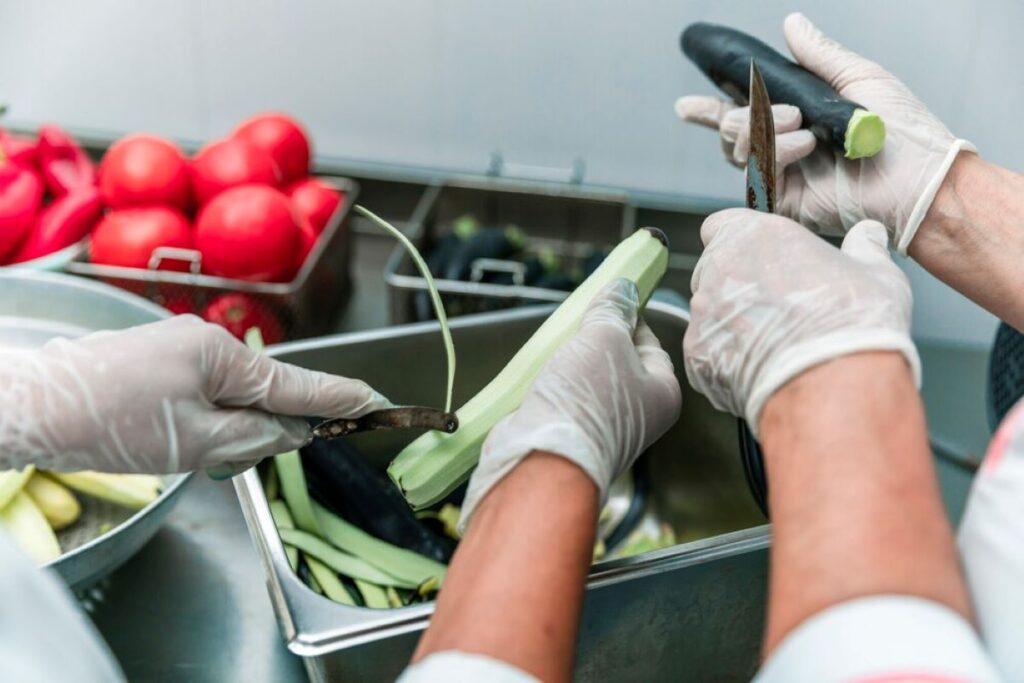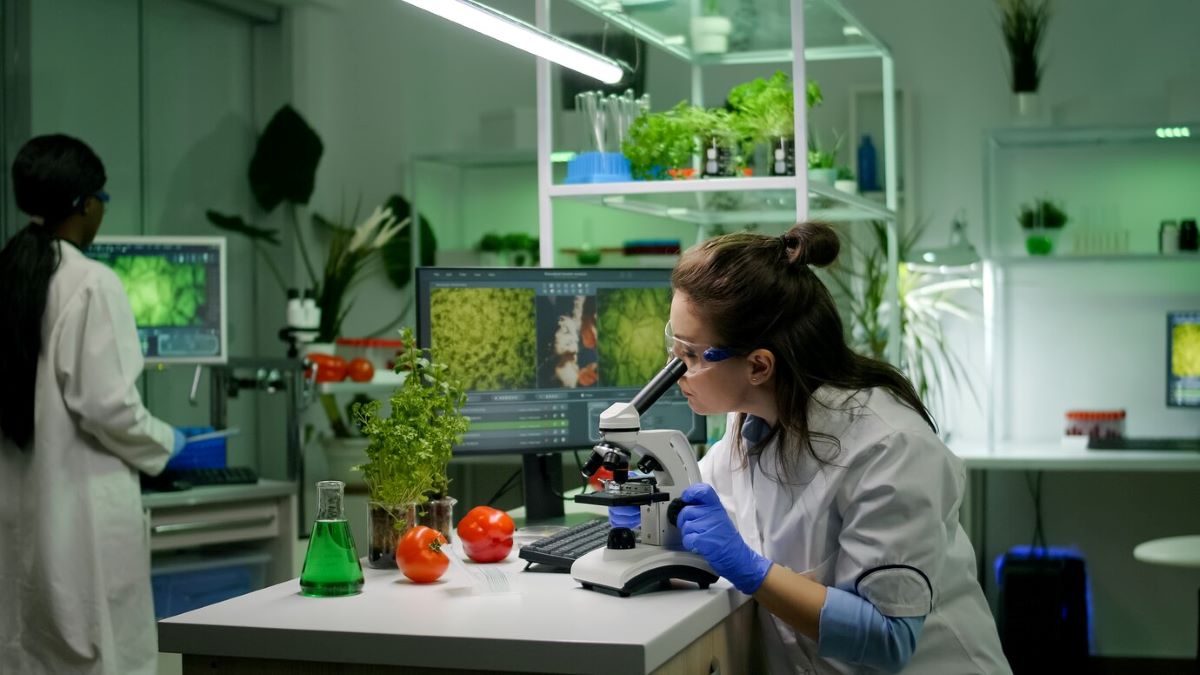Food safety and compliance systems are essential for growing businesses in the food industry. As organisations expand their operations, it becomes increasingly challenging to uphold strict safety standards. These systems not only protect public health but also preserve business reputation and sustainability.
Challenges faced by growing food businesses in maintaining compliance
Growing food businesses encounter specific obstacles in ensuring compliance:
- Resource allocation – finding a balance between operational costs and safety requirements
- Scale management – adjusting safety protocols to accommodate higher production volumes
- Documentation demands – keeping track of and maintaining detailed records
- Staff training – guaranteeing consistent safety practices among expanding teams
The regulatory landscape has changed significantly with the introduction of the FDA’s Food Safety Modernization Act (FSMA). This groundbreaking legislation shifted the focus from reacting to contamination to preventing it. The FSMA requires:
- Risk-based preventive controls
- Inspection and compliance obligations
- Authority to respond to safety issues
- Strengthened collaborations between regulatory agencies
For growing businesses, establishing strong food safety and compliance system is not just about fulfilling regulatory obligations—it’s about creating a solid foundation for sustainable growth. These systems need to be scalable, efficient, and flexible to accommodate evolving business needs while upholding the highest safety standards.
The adoption of digital solutions and automated systems has become crucial for effectively managing these intricate requirements, allowing businesses to stay compliant while prioritising growth and innovation.
Understanding the Need for Food Safety Compliance Systems
Food safety compliance systems are essential for protecting growing businesses from potentially devastating consequences. The effects of foodborne illnesses, which can be mitigated by following some basic food safety tips, go beyond immediate health concerns for customers, impacting an organisation’s operations and reputation as a whole.
Financial Impact of Foodborne Illnesses:
- Legal settlements and compensation claims
- Lost revenue from business interruption
- Product recall expenses
- Increased insurance premiums
- Medical costs and liability claims
A single food safety incident can result in losses ranging from £30,000 to £300,000 for small to medium-sized businesses. These figures escalate dramatically for larger operations, with some cases reaching millions in damages.
Consequences of Compliance Failure:
- Regulatory fines and penalties
- Mandatory closure orders
- Criminal prosecution
- Licence revocation
- Brand reputation damage
- Loss of supplier contracts
Risk Factors in Inadequate Safety Measures:
- Cross-contamination during food preparation
- Improper temperature control
- Poor hygiene practices
- Inadequate staff training
- Insufficient documentation and record-keeping
The implementation of digital compliance solutions, such as automated monitoring systems and real-time tracking, helps businesses identify and mitigate these risks before they escalate into serious incidents. These systems provide documented evidence of compliance efforts, crucial during regulatory inspections and audits.
Recent studies indicate that businesses with robust compliance systems experience 60% fewer food safety incidents and maintain higher customer trust ratings. The investment in comprehensive safety measures protects both public health and business sustainability.
Building Robust Food Safety Compliance Programs
A successful food safety compliance program starts with a thorough assessment of business size and available resources. Small businesses might require different approaches compared to larger operations:
- Resource Assessment Checklist:Available staff and expertise
- Financial capabilities
- Technology infrastructure
- Physical facility requirements
- Training capacity
Senior management plays a crucial role in establishing and maintaining a strong food safety culture. Leadership must demonstrate visible commitment through:
- Active participation in food safety meetings
- Resource allocation for compliance initiatives
- Regular facility walk-throughs
- Recognition of staff compliance efforts
- Clear communication of food safety priorities
The integration of internal knowledge with external regulatory guidance creates a comprehensive compliance framework. This dual approach includes:
Internal Components:
- Historical data and past experiences
- Staff expertise and insights
- Existing quality control processes
- Company-specific procedures
External Elements:
- FDA guidelines and regulations
- Industry best practices
- Third-party audit requirements
- Expert consultations
Digital compliance solutions like Squizify help businesses streamline these elements through:
- Automated documentation systems
- Real-time monitoring capabilities
- Customised checklists and protocols
- Integrated reporting functions
A robust compliance program requires regular evaluation and updates to maintain effectiveness. Implementing a systematic review process helps identify gaps and opportunities for improvement while ensuring alignment with current regulatory standards.

Leveraging Automation for Enhanced Food Safety and Compliance
Automation transforms traditional food safety practices into streamlined, error-free processes. Digital solutions eliminate manual record-keeping challenges through standardised data collection and real-time monitoring systems, revolutionizing digital food safety management.
Key Benefits of Automated Food Safety Systems:
- Consistent temperature monitoring with automated alerts
- Digital documentation for immediate access during inspections
- Reduced human error in compliance tracking
- Time savings through automated scheduling of safety checks
- Enhanced traceability across the supply chain
Artificial Intelligence (AI) and Machine Learning (ML) capabilities bring predictive analytics to food safety management. These technologies analyse patterns in historical data to identify potential risks before they manifest into serious issues.
AI-Powered Risk Prevention:
- Early detection of equipment maintenance needs
- Identification of contamination risk patterns
- Prediction of potential compliance violations
- Analysis of supplier performance trends
- Optimisation of cleaning schedules
Automated reporting systems create audit-ready documentation, ensuring businesses maintain continuous compliance with regulatory requirements. Digital platforms generate comprehensive reports that track:
- HACCP compliance metrics
- Temperature control logs
- Cleaning and sanitisation records
- Staff training completion rates
- Corrective action documentation
Modern food safety platforms integrate seamlessly with existing business systems, creating a centralised hub for compliance management. Cloud-based solutions enable remote monitoring and instant access to critical safety data, supporting informed decision-making across multiple locations.
The implementation of automated systems scales with business growth, adapting to increased complexity while maintaining consistent safety standards. These digital tools provide the foundation for sustainable expansion without compromising food safety protocols.
Evolving Quality Systems to Support Business Growth
As food businesses grow, they need more advanced quality systems that can keep up with their operations. While smaller businesses may get by with basic testing methods, larger ones require strong quality management frameworks to ensure safety and follow regulations.
From Basic Testing to Advanced Quality Systems
Quality systems usually go through different stages of development:
- Initial Stage: Basic testing and manual record-keeping
- Intermediate Phase: Digital documentation and systematic quality checks
- Advanced Implementation: Integrated quality management systems with real-time monitoring such as those provided by simplerqms.com
Role of Quality Personnel and Digital Solutions
Having dedicated quality personnel is crucial for effective food safety management:
- Conducting regular audits and inspections
- Training staff on safety protocols
- Managing documentation and compliance records
- Analysing quality metrics and trends
Digital compliance software platforms work alongside human expertise by:
- Automating routine quality checks
- Maintaining centralised documentation
- Providing real-time alerts for safety violations
- Generating comprehensive compliance reports
Continuous Improvement Through Feedback Loops
An effective quality system includes feedback mechanisms:
- Data Collection: Gathering information from various touchpoints
- Analysis: Identifying patterns and areas for improvement
- Implementation: Applying corrective measures
- Monitoring: Tracking the effectiveness of changes
Quality systems need to be flexible enough to adapt to changing business needs while still upholding strict safety standards. Regular reviews and updates of the system will ensure it stays in line with current industry best practices and regulatory requirements. You may like to visit https://mycoastcomputers.com/comparing-the-top-food-safety-software-companies-in-australia/ to get more about comparing the top food safety software companies in Australia.
Ensuring Success in Food Safety Compliance Systems for Growing Businesses
Successful food safety compliance systems rely on three critical pillars: committed leadership, trained staff involvement, and systematic risk assessment protocols.
Leadership Commitment
- Active participation in compliance meetings
- Resource allocation for safety initiatives
- Clear communication of safety expectations
- Regular review of compliance metrics
- Recognition of staff efforts in maintaining standards
Staff Training and Engagement
To ensure the effectiveness of staff training and engagement, businesses should focus on:
- Regular certification updates
- Hands-on practical training sessions
- Cross-departmental knowledge sharing
- Documentation of training records
- Performance evaluation linked to compliance
Risk Assessment Framework
A robust risk assessment framework involves:
- Daily hazard identification checks
- Weekly compliance audits
- Monthly trend analysis
- Quarterly system evaluations
- Annual comprehensive reviews
Digital compliance platforms streamline these processes through:
- Real-time monitoring capabilities
- Automated alert systems
- Data-driven decision making
- Centralised documentation
- Integrated reporting tools
A robust compliance system requires constant vigilance. Growing businesses benefit from implementing structured monitoring schedules:
- Daily operational checks
- Weekly compliance reviews
- Monthly performance assessments
- Quarterly system audits
- Annual strategic planning
These systematic approaches create a culture of continuous improvement while maintaining high safety standards across expanding operations, ultimately supporting the overall success of food safety compliance systems in growing businesses.

Conclusion
Food safety compliance systems are essential for sustainable business growth in the food industry. When strong safety measures are in place, it leads to safe products that build consumer trust, which in turn drives market expansion and business success.
By strategically investing in comprehensive compliance solutions like Squizify, food safety can be transformed from a regulatory burden into a competitive advantage. Modern digital platforms make operations more efficient, automate record-keeping, and offer real-time monitoring capabilities that are crucial for growing businesses.
To achieve excellence in food safety, the following actions are necessary:
- Consistent commitment to compliance standards
- Integration of automated solutions
- Regular staff training and development
- Continuous evaluation and improvement of systems
Growing businesses that prioritise food safety compliance are positioning themselves for long-term success in an increasingly regulated market. The time to act is now – invest in robust food safety systems to protect your brand, your customers, and your future growth potential.



